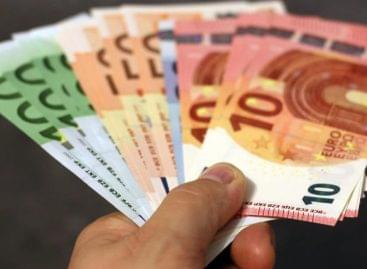Inflation decreased to 20.1%
As expected, inflation decreased to 20.1% in June from 21.5% in April, which was contributed by almost all factors except the prices of clothing, other items, fuel and service providers. The increase in food prices moderated as expected, household energy prices continued to decrease due to lower energy consumption, the prices of durable consumer goods decreased due to the strengthening of the forint and the decrease in the prices of industrial goods, the prices of spirits rose to a lesser extent than expected, but the prices of fuel and other items rose, as well as the prices of the services.
In the case of food prices, the seasonally observable drop in summer food prices also contributed to the effects of the ever-widening price reductions, which may continue in the coming months due to the drop in raw material prices and production costs. The easing of inflationary pressure is reflected by the fact that core inflation also decreased to 20.8% from 22.8% in the previous month.
In the second half of the year, we expect a sharp decrease in inflation due to base effects and the increasingly widespread price reductions announced for food products. The base effects can be strengthened by the fact that international raw material, product and energy prices and transport costs have fallen significantly, mostly to 2021 levels, in recent months, so we do not expect any new external price shocks, and in fact, inflation may decrease faster than expected. and the strengthening of the forint can also accelerate the reduction of inflation, which can already be clearly observed in the case of consumer durables. It is also a downside risk that in the coming months, even for households paying a flat rate, the lower consumption may have a reducing effect on energy bills, which may lead to a further decrease in household energy prices in the consumer price index. The formation of a price-wage spiral can be observed in some service sectors, which may slow down the rate of inflation reduction, but we expect single-digit inflation from October, which may decrease to close to 6% by the end of the year. Due to the increasingly favorable trends and the growing downside risks, we maintain our average inflation expectation of 17.5% this year, while next year’s inflation may decrease to 3.9% despite the increase in the excise tax on fuels at the beginning of next year.
Inflation processes will also strengthen our interest rate expectations at the end of the year, accordingly, the base interest rate may drop to 10.5% by the end of the year, after it is expected that the one-day quick tender rate will be tied to the base interest rate in September.
Related news
Inflation in Italy accelerated to 1.7 percent in June
In Italy, consumer prices rose by 1.7 percent year-on-year in…
Read more >MNB Director: The central bank expects 4.7 percent annual inflation this year
Inflation is expected to exceed the central bank’s tolerance band…
Read more >Despite economic recovery, the number of insolvencies has increased in the Central and Eastern European region
The annual insolvency report for Central and Eastern Europe (CEE)…
Read more >Related news
GKI analysis: Why do Hungarian households live more poorly than anyone else in the EU?
Imagine that the residents of every EU country shop in…
Read more >KSH: industrial producer prices decreased by 0.7 percent in May 2025 compared to the previous month, and increased by an average of 6.9 percent compared to a year earlier
In May 2025, industrial producer prices were 6.9 percent higher…
Read more >Consumption drives the economy
According to the latest forecast by the Balance Institute, the…
Read more >






